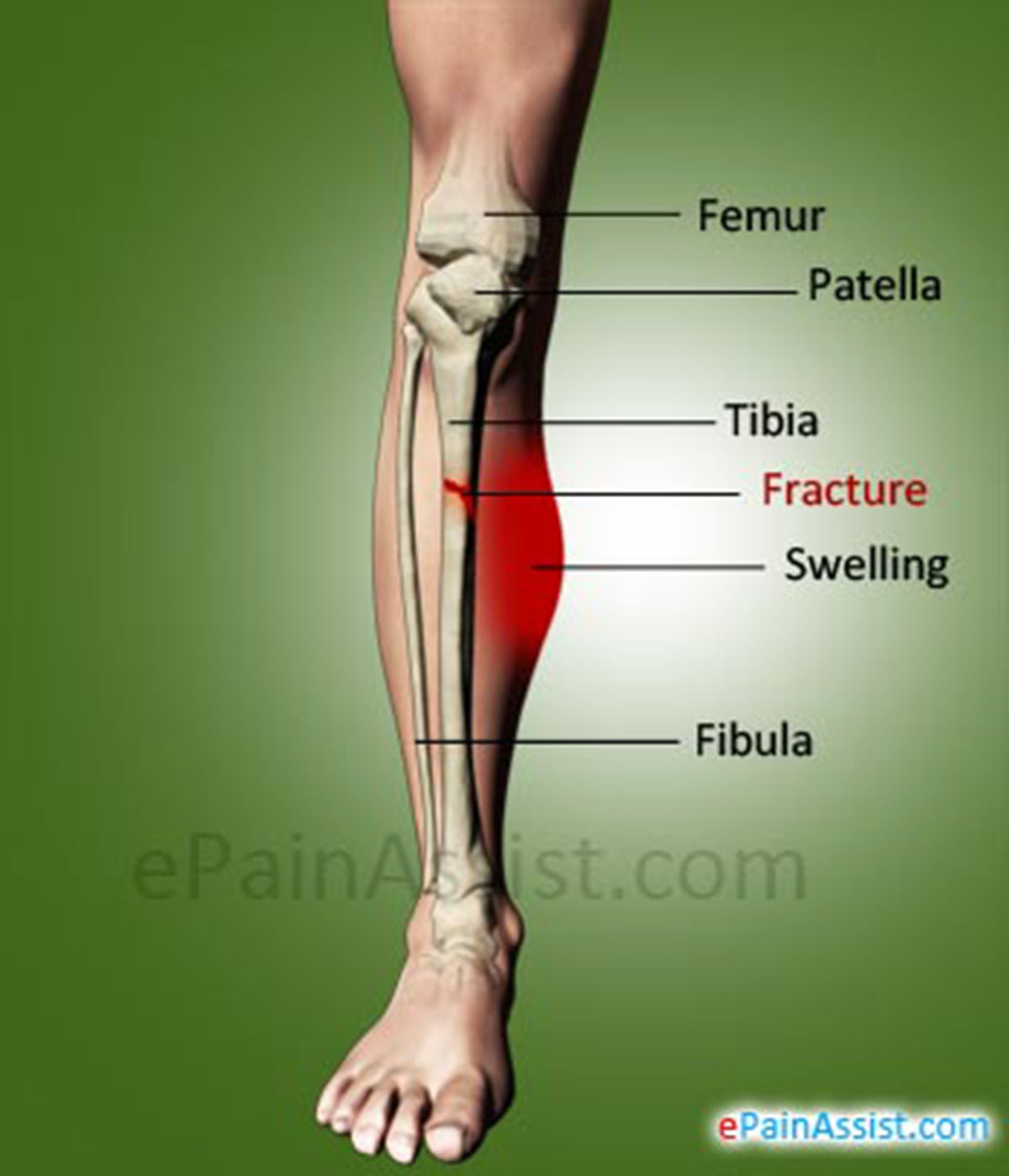Shin Bone[¹] which is also known as the tibia, is an important bone of the lower leg. Any injury or trauma to the lower leg results in Shin Fracture or Fracture of the Tibia. The fracture may be full, partial, or hairline fracture.
Causes of Shin Fracture or Fracture of Tibia[²]
- Ankle inversion with significant weight bearing.
- Landing awkwardly on the leg after a fall.
- Direct trauma to the anterior or inner regions of the lower leg or ankle.
- Sports involving sudden change of direction as seen in football, rugby, basketball etc. also results in tibia fracture.
- Prolonged overuse can result in a stress fracture of the tibia such as excessive running.

Signs and Symptoms of Shin Fracture or Fracture of Tibia
- Instant pain.
- Swelling appears immediately.
- Inability to walk and pain upon walking.
- Tenderness in the leg.
- Bruising may be present.
- Patient is not able to bear weight on the leg.
- Leg appears crooked or deformed.

Types of Shin Fracture or Fracture of Tibia
Shin Fracture or Tibia fracture is of 2 types:
- Stress Fracture:[³] There are 2 bones in the lower leg, tibia, and fibula. Tibia is bigger than fibula. Its main function is supporting the weight of the body. The function of fibula is largely muscle attachment. Stress fractures occur over a period of time due to repetitive trauma to the leg. It is commonly seen in runners as they are subject to repetitive stress. The risk of fracture increases if there is poor shock absorbing such as running on hard pavements or wearing ill-fitting footwear.
- Traumatic Fractures: These result from a sudden force or impact to the bone such as seen in football tackle or a car accident. It may occur in conjunction with other injury such as ankle sprain.
Treatment for Shin Fracture or Fracture of Tibia[⁴]
- Immediate medical attention should be sought.
- X-ray confirms the diagnosis.
- A cast is placed on the lower leg and ankle for 6 to 8 weeks to immobilize the bone.
- Complete weight bearing should be avoided and crutches can be used to achieve this purpose.
- Surgery may be required in complicated fractures.
- Patient should enroll in a rehab program after the healing is complete. Stretching and strengthening exercises should be done to increase the mobility and flexibility of muscles.
Also Read:
